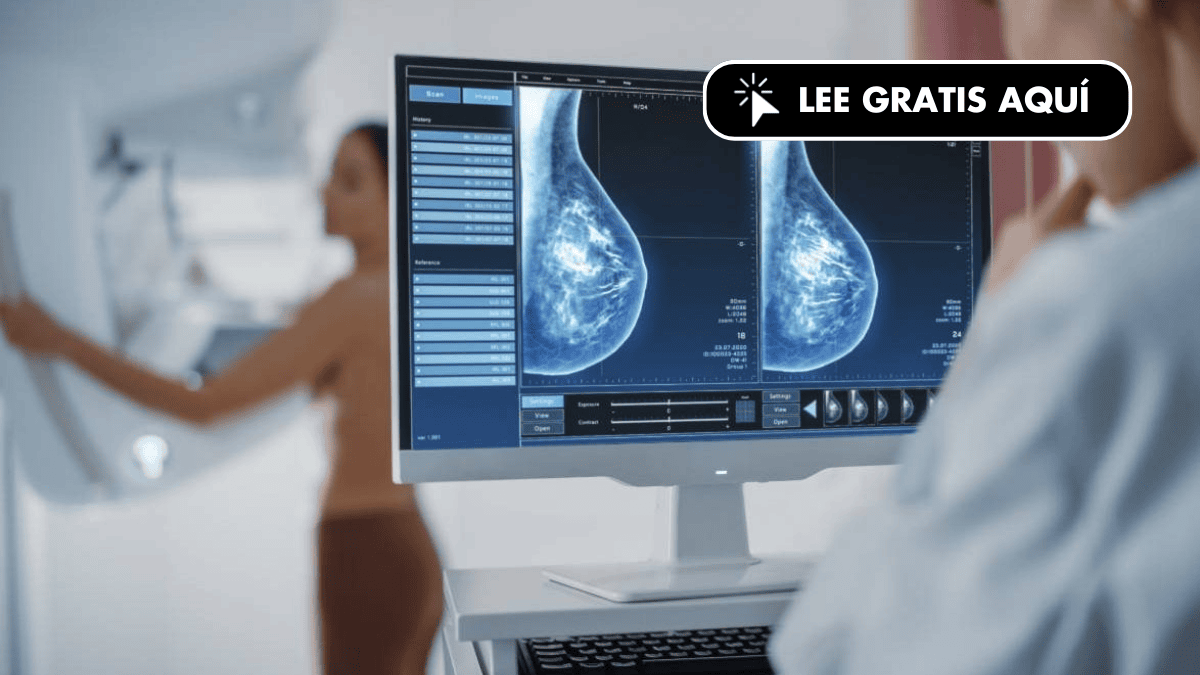Decades earlier, genetic variants predicted breast cancer risk

The team, led by researchers at Stanford University School of Medicine, studied samples from approximately 6,000 breast cancer patients at various stages of the disease. discovered that genetic sequences inherited at the time of conception are clear predictors of this disease. and its potential mortality. The results were presented in the latest issue of the journal. The science.
The work challenges the view that most cancers arise from random mutations accumulating throughout life. Instead, it indicates that hereditary genetic sequences Known as the germline genome, they determine whether cells with cancer-causing mutations are recognized and destroyed by the immune system or go undetected and develop into nascent cancer.
With the exception of a few highly dominant genes such as BRCA1 and BRCA2, which occur in one in 500 women and increase the risk of breast or ovarian cancer, “the role of hereditary factors remains poorly understood.” speaks Christina CurtisProfessor of Genetics and Biomedical Data Science at Stanford and senior author of the paper.
Curtis tells SINC via email that with this work they tried to understand “if hereditary factors and immunity “They determine the path of tumor development and determine disease progression.”
“Our results reveal a new class of biomarkers for predicting tumor progression and A Whole New Way to Understand the Origins of Breast Cancer“, he emphasizes.
The role of epitopes
Specifically, “we found that inherited variations in cancer-associated genes affect how protein fragments or epitopes – part of the molecule recognized by the antibody and to which it binds – derivatives of these oncogenes are present in nascent tumor cells and, therefore, can be “visible” by the immune system.
According to the researcher, “people with high workload epitopes subtypes of breast cancer in which this oncogene has been amplified (many copies) are less likely to develop in the germline,” he explains.
Additionally, says Curtis, they found that “in premalignant tumors, a high load of germline epitopes protects against progression toward invasive disease because incipient tumor cells that present abundant epitopes on their cell surface easier to detect and destroy by the immune system.
However, “if the tumor becomes invasive, high epitope load is associated with more aggressive disease.” and immune suppressionpresumably because he had developed ways to avoid detection. Thus, during tumor progression, the picture is reversed.
According to the expert, “this discovery highlights complex balance between tumor and immune system patient, which develop simultaneously during the course of the disease. We also believe in the importance of intercepting malignancy at early phase, at the same time, healing can be achieved,” he emphasizes.
Artificial Intelligence and Tumor Subtypes
In 2012, Curtis began studying in depth—using machine learning artificial intelligence—the types of somatic mutations that occur in thousands of breast cancer cases. Finally, he classified the disease into 11 subtypes with different prognoses and relapse risks.
They found that four of these 11 groups were significantly more likely to relapse even 10 to 20 years after diagnosis, which is important information for doctors making treatment decisions and analyzing long-term prognosis.
He comments that in this previous work they established ” Reliable molecular classification of breast cancer based on genomic and transcriptional characteristics. “This has led to the emergence of multiple disease subgroups characterized by different oncogene-promoting genes and different clinical outcomes.”
Some of these subgroups, he points out, “have high and constant risk of relapse” His team is now conducting clinical trials “to evaluate new treatments for more effective treatment.”
He points out that in the new study, they “identified hereditary factors influencing the occurrence of these subtypes of breast cancer, as well as complex interactions with the immune system.” This new information makes it possible to stratify the disease at earlier stages,” he emphasizes.
Great collection of data
In work presented this week in The science, “We used our innovative algorithms and diagnostic methods. To do this, we analyzed nearly 6,000 samples from patients with preinvasive, invasive tumors and advanced (metastatic) disease, representing one of the largest collections of its type,” Curtis told SINC.
The researcher believes that “new tools are needed to identify people with precancerous breast cancer (ductal carcinoma). on site) that are at high risk of developing into an invasive form and may benefit from more aggressive treatment.” Likewise, “it is important to avoid over-treating people whose tumors develop slowly or do not progress. “Our results open up a new way to manage risk stratification,” he insists.
He adds that “they are necessary Additional studies in larger patient cohortss and prospective studies to confirm these results. “More generally, further research into precancerous tumors may help develop strategies to prevent cancer.”
Link:
K.E. Houlahan K. Curtis et al. “Germline-mediated immunoediting shapes breast cancer subtypes and susceptibility to metastasis.” The science (2024)

